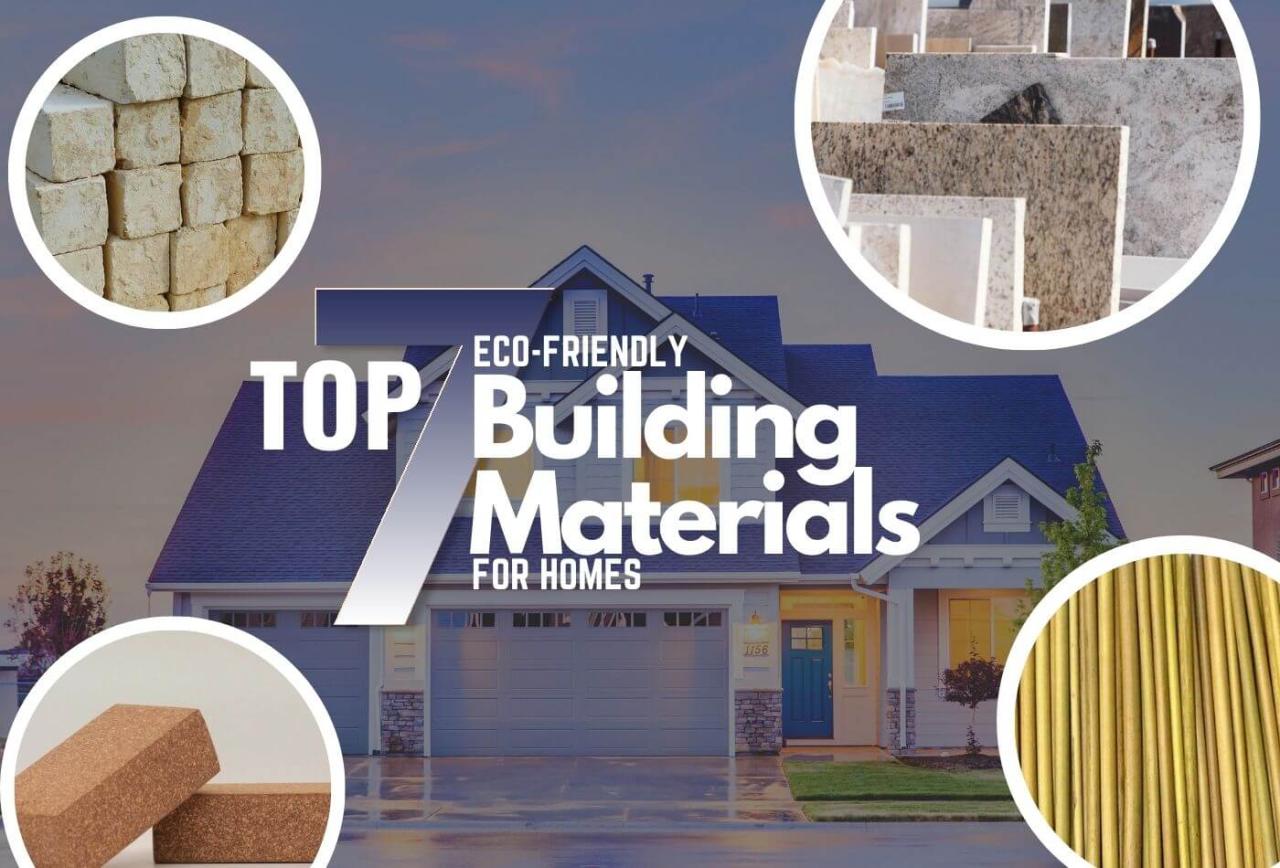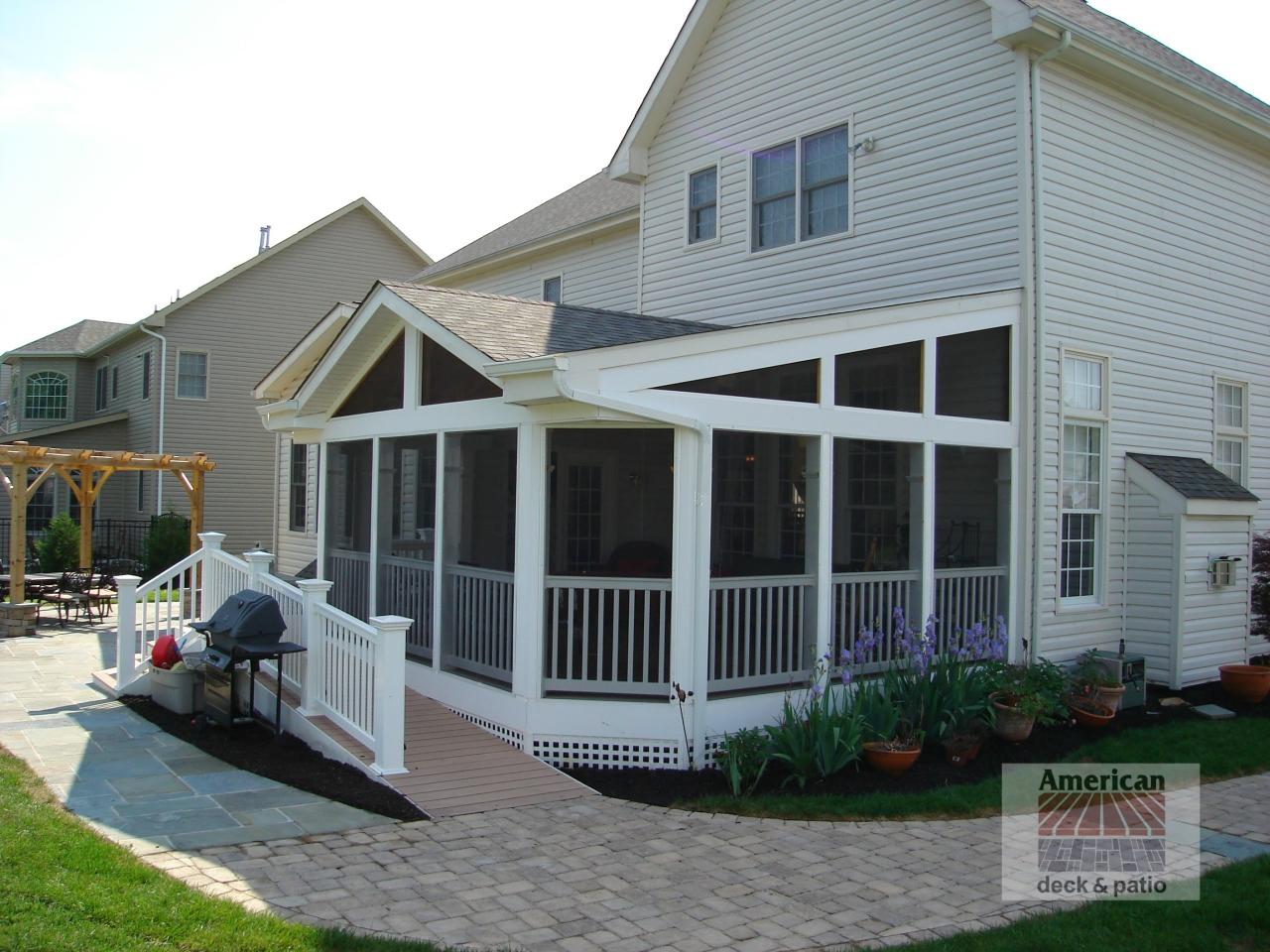Exploring the realm of eco-friendly home renovation materials opens up a world of sustainable choices and innovative solutions. This guide aims to shed light on the importance of utilizing eco-conscious materials, showcasing examples, discussing benefits, and weighing cost-effectiveness. Dive in to discover how you can transform your living space while caring for the environment.
In the subsequent section, we will delve deeper into specific categories such as flooring options, paints and finishes, and insulation materials, offering insights and practical tips for a greener home renovation journey.
Eco-friendly Home Renovation Materials

When it comes to home renovation projects, using eco-friendly materials is crucial for reducing environmental impact and promoting sustainability. By opting for materials that are environmentally friendly, we can contribute to a healthier planet and create a more sustainable living space for ourselves and future generations.
Common Eco-friendly Materials Used in Home Renovations
- Bamboo: A fast-growing and renewable resource that can be used for flooring, cabinets, and furniture.
- Recycled Glass: Used for countertops, tiles, and decorative accents, made from recycled glass bottles and other waste materials.
- Cork: Sustainable and biodegradable material used for flooring, insulation, and wall coverings.
- Reclaimed Wood: Salvaged from old buildings, barns, and other structures, giving new life to wood that would otherwise be discarded.
Benefits of Choosing Sustainable Materials
- Reduced Carbon Footprint: Eco-friendly materials often have lower emissions during production and contribute less to greenhouse gas emissions.
- Healthier Living Environment: Non-toxic materials improve indoor air quality and reduce exposure to harmful chemicals.
- Longevity and Durability: Many sustainable materials are known for their longevity and durability, resulting in less frequent replacements and less waste over time.
Cost-effectiveness of Eco-friendly Materials
While eco-friendly materials may have a slightly higher upfront cost compared to traditional options, they often prove to be more cost-effective in the long run. With lower maintenance requirements, energy efficiency benefits, and potential savings on utilities, the investment in sustainable materials can pay off over time.
Flooring Options
When it comes to eco-friendly flooring options for your home renovation, there are several sustainable materials to choose from. These materials not only help reduce your carbon footprint but also add a unique touch to your living space.
Bamboo Flooring
- Bamboo flooring is a popular choice for eco-conscious homeowners due to its rapid growth cycle.
- It is durable and can withstand heavy foot traffic, making it suitable for high-traffic areas like living rooms and kitchens.
- Regular sweeping and occasional mopping are usually sufficient to maintain bamboo flooring.
Cork Flooring
- Cork flooring is made from the bark of cork oak trees, making it a renewable and sustainable option.
- It is naturally resistant to mold, mildew, and insects, making it ideal for moisture-prone areas like bathrooms.
- Cork flooring requires regular sweeping and occasional sealing to maintain its durability.
Reclaimed Wood Flooring
- Reclaimed wood flooring is sourced from old barns, factories, and other structures, giving it a unique and rustic look.
- It is highly durable and can last for decades with proper care and maintenance.
- Regular cleaning and refinishing are recommended to preserve the beauty of reclaimed wood flooring.
Linoleum Flooring
- Linoleum flooring is made from natural materials like linseed oil, cork dust, and wood flour, making it biodegradable and eco-friendly.
- It is water-resistant and easy to clean, making it a practical choice for kitchens and bathrooms.
- Regular sweeping and damp mopping are sufficient to keep linoleum flooring looking its best.
Paints and Finishes
When it comes to renovating your home with eco-friendly materials, choosing non-toxic paints and finishes is essential for creating a healthy living environment. Conventional paints can release harmful chemicals into the air, affecting indoor air quality and potentially causing health issues.
Opting for eco-friendly alternatives can help reduce these risks while also being better for the environment.
Non-Toxic Paint Options
- Look for paints labeled as low-VOC (volatile organic compounds) or VOC-free, as these options have fewer harmful chemicals.
- Natural paints made from ingredients like clay, lime, or plant-based oils are also great non-toxic choices.
- Water-based paints are another eco-friendly option that emits fewer harmful fumes compared to solvent-based paints.
Environmental Impact
Conventional paints contribute to air pollution and can release toxins into the environment during production and application. On the other hand, eco-friendly paints use natural and sustainable ingredients, reducing their environmental impact significantly.
Choosing Low-VOC Finishes
- When selecting finishes for your home, opt for products with low-VOC or VOC-free formulations to minimize indoor air pollutants.
- Consider water-based finishes for a healthier alternative that is also durable and long-lasting.
- Look for finishes that are certified by reputable organizations like Green Seal or EcoLogo for assurance of their eco-friendly properties.
Design Possibilities
Eco-friendly paints come in a wide range of colors and finishes, allowing you to explore various design possibilities for your home. From vibrant hues to subtle tones, you can create a stylish and sustainable living space using these environmentally-friendly options.
Insulation and Energy-Efficient Materials

Proper insulation plays a crucial role in eco-friendly home renovations by reducing energy consumption, improving indoor comfort, and minimizing environmental impact. Choosing sustainable insulation materials can significantly contribute to the overall energy efficiency of a home.
Types of Sustainable Insulation Materials
- Bio-based insulation: Made from renewable resources such as soy, hemp, or cotton, these materials offer excellent thermal performance and are biodegradable.
- Recycled insulation: Utilizing recycled materials like denim or cellulose, these options help reduce waste and energy consumption during production.
- Cork insulation: Cork is a natural and sustainable material that provides both thermal and acoustic insulation properties, making it an eco-friendly choice.
Energy-Saving Benefits of Eco-Friendly Insulation
- Reduced energy bills: Proper insulation helps maintain consistent indoor temperatures, reducing the need for heating and cooling, resulting in lower energy costs.
- Improved indoor comfort: Effective insulation creates a more comfortable living environment by minimizing drafts and temperature fluctuations.
- Environmental impact: Sustainable insulation materials have a lower carbon footprint and contribute to a healthier indoor air quality.
Tips for Improving Energy Efficiency
- Consider the R-value: Choose insulation materials with a high R-value to maximize thermal resistance and energy efficiency.
- Air sealing: Combine insulation with proper air sealing techniques to prevent air leaks and enhance the overall performance of the insulation.
- Consult with a professional: Seek advice from experts to determine the most suitable insulation materials and techniques based on your home's specific needs.
Final Summary

As we conclude this exploration of eco-friendly home renovation materials, it becomes evident that making environmentally conscious choices can lead to a more sustainable and aesthetically pleasing living environment. By opting for eco-friendly materials, you not only enhance the beauty of your home but also contribute to a greener future for generations to come.
FAQ Explained
Are eco-friendly materials more expensive than traditional options?
Eco-friendly materials can sometimes have a higher upfront cost, but they often prove to be cost-effective in the long run due to their durability and energy-efficient properties.
What are some examples of eco-friendly flooring materials?
Popular eco-friendly flooring options include bamboo, cork, reclaimed wood, and linoleum, all known for their sustainable sourcing and minimal environmental impact.
How do eco-friendly paints contribute to indoor air quality?
Non-toxic eco-friendly paints emit fewer harmful chemicals, promoting better indoor air quality and creating a healthier living space for occupants.
Why is proper insulation crucial in eco-friendly home renovations?
Effective insulation helps reduce energy consumption by maintaining consistent indoor temperatures, leading to lower utility bills and a more sustainable home environment.








